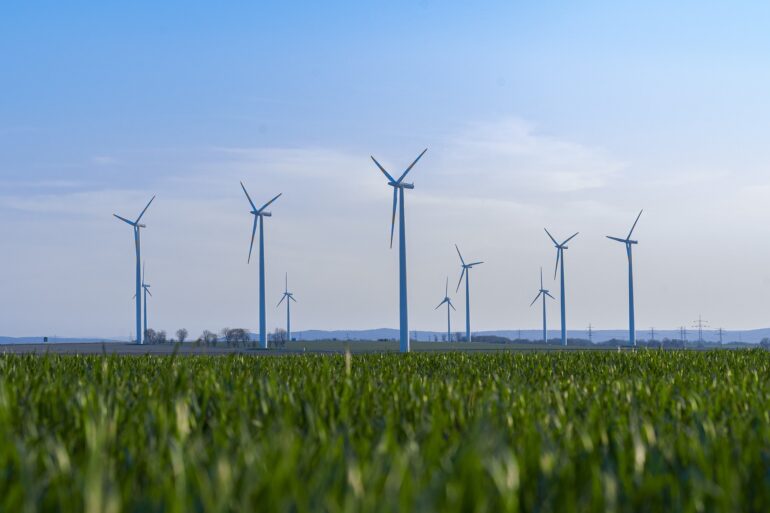TL;DR:
- AI and ML are driving the adoption of renewable energy in the clean energy sector.
- Distributed energy management systems (DERMS) utilize AI and ML to optimize the integration of distributed energy resources (DERs).
- AI-powered Virtual Power Plants (VPPs) aggregate DERs, enhancing grid stability and reducing reliance on polluting energy sources.
- AI and ML algorithms optimize energy usage, improve grid efficiency, and lower costs.
- The flexibility of AI-powered systems ensures resiliency during disruptions.
- DER assets can be maximized through AI and ML integration, unlocking their full potential.
- AI-powered VPPs effectively balance distributed energy resources and analyze market dynamics.
- AI enables seamless integration and regulation of EV charging, benefiting EV infrastructure and consumers.
Main AI News:
In recent years, the emergence of ChatGPT and generative AI has sparked discussions and concerns about their future impact. While the potential misuse of AI has been widely debated, one area that often goes unnoticed is its profound influence on driving the adoption of renewable energy. Within the clean energy sector, the application of AI is revolutionizing the industry, surpassing human capabilities and delivering remarkable outcomes.
The pivotal role of Artificial Intelligence and Machine Learning in facilitating our modern energy transition cannot be overstated. With the rise of distributed energy management systems (DERMS), which encompass cloud-based software platforms like Virtual Power Plants (VPPs), AI and ML have become indispensable in optimizing the integration of distributed energy resources (DERs) such as electric vehicles, solar panels, and smart loads. Traditional tools simply cannot handle the complex task of simultaneously monitoring, forecasting and orchestrating tens of thousands of diverse distributed devices. AI empowers us to fortify the resilience of our energy grid, expediting the shift from detrimental, polluting energy sources to cleaner and more sustainable alternatives.
Unleashing the Power of AI and ML in Advancing the Clean Energy Transition
AI and ML are intricate yet interdependent systems that play a pivotal role in enabling Virtual Power Plants and Distributed Energy Resources to efficiently manage the global energy supply. Balancing intermittent renewable energy resources alongside conventional fossil fuel generation is vital to ensuring the reliability of the grid. However, without AI tools, demand side resources would be limited in their ability to contribute to grid balancing due to constraints in visibility, control, latency, and scalability. Thanks to AI-powered VPPs, we can now aggregate vast portfolios of DERs, bolstering the stability of clean energy and minimizing the reliance on inefficient and polluting sources like gas peaker plants.
The versatility of AI and ML extends to enhancing distributed energy systems in diverse ways. Leveraging algorithms that incorporate both ML and AI, we can monitor and manage thousands of distributed devices to optimize energy consumption and proactively address potential issues, ultimately boosting the overall efficiency of the grid. When it comes to energy optimization, AI and ML consider a wide array of constraints and inputs, spanning from site-level considerations to the distribution grid and the bulk electrical system. By meticulously analyzing extensive datasets, including grid information and weather forecasts, AI-powered software systems guide decisions that reduce costs and carbon emissions by intelligently adjusting and managing various aspects of the energy supply. This flexible aggregated capacity enhances resiliency and reliability, especially in the face of extreme weather events and failing infrastructure.
Unlocking the Full Potential of DERMs, DERs, and VPPs through AI and ML
To achieve the ambitious goals of the energy transition for our grid, optimal integration of DER assets such as solar panels, battery storage systems, and electric vehicles is paramount. AI and ML algorithms play a critical role in this process by accounting for the unique flexibility profiles and constraints of each DER. This holistic approach maximizes the overall utilization and value of each DER, improving grid efficiency and ensuring real-time balance between supply and demand. Harnessing the capabilities offered by AI and ML, DERs evolve into invaluable grid assets, unlocking their full potential.
VPPs rely on the combined power of AI and ML to effectively balance a wide spectrum of distributed energy resources, enabling them to rapidly optimize and capitalize on DERs. AI-powered VPPs not only tackle the complexity of aggregating and managing diverse energy sources but also analyze price fluctuations, supply, and demand to minimize overall costs. In the realm of electric vehicles, AI-powered software systems seamlessly integrate and regulate EV charging, bolstering EV infrastructure while simultaneously reducing costs for consumers.
The transformative influence of Artificial Intelligence and Machine Learning in the clean energy sector cannot be understated. By propelling renewable energy adoption, optimizing energy management systems, and empowering distributed energy resources, AI and ML are silently revolutionizing our energy grid. As we strive towards a sustainable future, the synergy between AI and clean energy will continue to reshape our world, ushering in an era of cleaner, more efficient, and resilient energy systems.
Conclusion:
The application of Artificial Intelligence and Machine Learning in the clean energy sector represents a significant shift in the market landscape. These technologies have proven instrumental in accelerating the adoption of renewable energy sources and optimizing energy management systems. The integration of AI and ML in distributed energy resources has enhanced grid stability and reduced reliance on polluting energy sources. This transformation allows for improved efficiency, cost reduction, and greater resiliency during disruptions. Additionally, the optimization and maximization of DER assets through AI and ML algorithms provide new avenues for achieving energy transition goals. AI-powered Virtual Power Plants effectively balance distributed energy resources while analyzing market dynamics, ensuring efficient energy supply. Moreover, the seamless integration and regulation of electric vehicle charging through AI enhance EV infrastructure and provide cost benefits to consumers. As the market continues to embrace these advancements, businesses need to recognize the transformative potential of AI and ML in the clean energy sector and adapt their strategies accordingly to stay competitive and contribute to a sustainable future.

